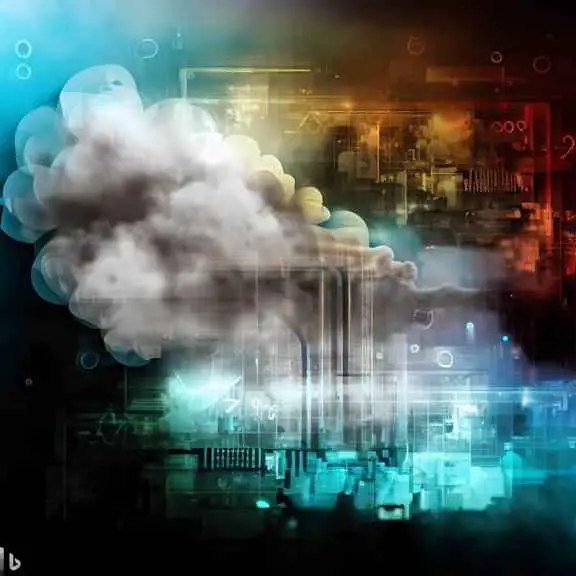Paragraph on
Pollution
for all Class, Words
by Environment on
Pollution is a major problem in our world today. It refers to the harmful substances that are released into the environment, leading to…, please continue reading.

Table of Content
Ad
The Paragraph on Pollution
Ad

Questions about Pollution
Ad
Pollution is a major problem in our world today. It refers to the harmful substances that are released into the environment, leading to negative impacts on the air, water, and land. It is a growing concern as it affects human health, wildlife, and the overall climate of our planet. The primary sources of pollution include industrial factories, transportation, and agricultural practices.
Air pollution is one of the most common forms of pollution that we see today. It is caused by the release of chemicals, gases, and other harmful substances into the atmosphere. The primary sources of air pollution include factory emissions, motor vehicles, and wildfires. This pollution can lead to respiratory problems, asthma, and other serious health issues.
Water pollution is also a major concern for our planet. It is caused by the release of chemicals, sewage, and other waste materials into our rivers, lakes, and oceans. This pollution can harm the aquatic life, making it difficult for them to survive. It can also make it unsafe for humans to drink and swim in the water.
Land pollution is another concern that we must address. It is caused by the disposal of hazardous waste materials, such as plastic bags, electronics, and other items that do not decompose easily. It can also be caused by contaminated soil, making it difficult to grow crops and sustain a healthy environment.
In order to combat pollution, we must take action to reduce our carbon footprint. This includes turning off lights when we leave a room, using renewable energy sources, and walking or biking instead of driving. We can also reduce pollution by recycling, composting, and properly disposing of hazardous materials. By taking these small steps, we can make a big impact on the health of our planet.
Q&A:
- What is pollution?
- Pollution refers to the harmful substances that are released into the environment, leading to negative impacts on the air, water, and land.
- What are the primary sources of pollution?
- The primary sources of pollution include industrial factories, transportation, and agricultural practices.
- What is air pollution?
- Air pollution is caused by the release of chemicals, gases, and other harmful substances into the atmosphere.
- What are the primary sources of air pollution?
- The primary sources of air pollution include factory emissions, motor vehicles, and wildfires.
- What is water pollution?
- Water pollution is caused by the release of chemicals, sewage, and other waste materials into our rivers, lakes, and oceans.
- How does water pollution affect aquatic life?
- Water pollution can harm the aquatic life, making it difficult for them to survive.
- What can be the consequences of air pollution on human health?
- Air pollution can lead to respiratory problems, asthma, and other serious health issues.
- What is land pollution?
- Land pollution is caused by the disposal of hazardous waste materials, such as plastic bags, electronics, and other items that do not decompose easily.
- Can we reduce pollution by taking small steps?
- Yes, we can reduce pollution by turning off lights when we leave a room, using renewable energy sources, and walking or biking instead of driving. We can also reduce pollution by recycling, composting, and properly disposing of hazardous materials.
- Why is it important to combat pollution?
- It is important to combat pollution because it affects human health, wildlife, and the overall climate of our planet.

Vocabulary related to Pollution
Ad
Vocabulary Words:
- Harmful - adjective - causing or capable of causing harm or injury - dangerous, toxic - harmless, safe
- Emissions - noun - the production and release of something, especially gas or radiation - discharge, pollution - intake, withdrawal
- Aquatic - adjective - relating to water - marine, oceanic - terrestrial, dry
- Respiratory - adjective - relating to the organs and processes of breathing - pulmonary, lung - non-respiratory, extrapulmonary
- Decompose - verb - to cause something to be broken down into smaller parts - rot, decay - construct, build
- Hazardous - adjective - involving danger or risk - unsafe, perilous - safe, secure
- Renewable - adjective - able to be replenished or restored - sustainable, eco-friendly - nonrenewable, unsustainable
- Composting - noun - the process of breaking down organic materials into soil - fertilizing, enriching - polluting, contaminating
- Atmospheric - adjective - relating to the atmosphere - climatic, weather - underground, subsurface
- Carbon footprint - noun - the amount of carbon dioxide and other carbon compounds emitted due to the consumption of fossil fuels by a particular person or group, event, organization, or product - impact, footprint - minor effect, no impact
- Wildlife - noun - animals and other organisms living in their natural environment - fauna, creatures - inanimate objects, non-living things
- Sewage - noun - waste matter that is carried away in sewers and drains - effluent, refuse - clean water, drink
- Disposal - noun - the act or means of getting rid of something - elimination, removal - retention, keeping
- Climate - noun - the weather conditions prevailing in an area in general or over a long period - temperature, atmosphere - wind, pressure
- Contaminated - adjective - made impure by exposure to or addition of a poisonous or polluting substance - polluted, poisoned - clean, pure

Structure of the sample "Pollution" paragraph
Ad
Cohesion and coherence are used throughout the sample paragraph to ensure that the ideas flow logically and smoothly. The paragraph begins with a definition of pollution and then moves on to discuss each type of pollution in detail. Each type of pollution is clearly defined, and the primary sources of each are identified. The paragraph concludes with a discussion of how we can combat pollution. The use of transitional words and phrases, such as “in order to combat pollution” and “by taking these small steps,” helps to connect the ideas and make the paragraph more cohesive. Additionally, repetition is used to reinforce key ideas and ensure coherence. For example, the phrases “harmful substances” and “negative impacts” are used throughout the paragraph to emphasize the dangers of pollution.
